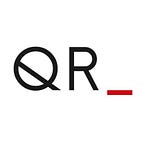What do Automotive OEMs Look For in a ‘Good’ Bill of Materials System?
Declaring something as ‘good’ is, almost entirely subjective. We must admit that, in life, there are generally accepted criteria for what can be considered ‘good’ and what can be considered ‘not good’ — for example, a chocolate teapot or a window made of bricks. However, in the context of automotive product data management, it is critical to primarily discover and understand what automotive OEMs can, or should, consider as being ‘good.’ Is it something fast? Something reliable? Something user-friendly? All of the above? Most likely the latter, but what is the likelihood of achieving each of these in one system? And, where this is not possible, which then becomes most important? These are just some of the key questions that must be asked to establish what makes a ‘good’ BoM and answered to understand what automotive OEMs look for within that system itself.
Of course, in an industry where the products are so complex and where each man-hour potentially equals thousands of dollars, a ‘good’ Bill of Materials (BoM) system will not be the same for all OEMs. For example, a start-up manufacturer producing one or two vehicle lines out of one site is much less likely to put a BoM system through the same demands and strains as a well-established multinational manufacturer producing millions of vehicles every year. In these larger OEMs, hundreds of users may be operating in a BoM system at any one time, anywhere in the world, working in different currencies, weight units, and languages. If the system is not able to effectively and efficiently manage this demand, the whole product development cycle is jeopardised. Understanding the needs of the users largely dictates what should be considered a ‘good’ BoM system, and where those needs diverge between manufacturers, the same BoM systems may not be considered ‘good’ for each of them.
What should a ‘Good’ BoM system contain?
Quick Release has been working with an array of clients all over the world to establish what various-sized OEMs consider to be the most important attributes in their BoM systems.
Consistently, we have found that companies — from start-ups to some of the biggest names — ultimately desire one master BoM system which can handle all their product data from creation to production.
Although it may seem obvious that a BoM system should be able to manage a product through its entire development cycle, it is also necessary to identify exactly what this includes, and how it may impact a business. Security and confidentiality concerns, for one, are key issues here — a BoM system which manages all product data from start to finish must also interact with external suppliers, vendors, and distributors. The system must be able to give relevant access to these stakeholders without compromising the confidentiality of the business. In addition to this, the system itself will be used by multiple departments even within the same business: R&D, Engineering, Purchasing, Procurement, I.T. to name a few. The system must equally be able to manage who gets to see what information, and track who makes which changes.
Although a good BoM system should be responsive to its multiple user groups, it also needs to be intuitive, and support the delivery of a profitable product. Accordingly, it must also be user-friendly, as time spent inefficiently is money lost to a business. A good BoM should offer a user experience that encourages the business to engage with it as a system and enable users to fulfil the full potential of their role both in and outside of the system. One of the key difficulties here is when a data set is evolving throughout the product lifecycle, from proposal to production and beyond. To satisfy the ‘one master BoM’ aim, the data referred to at each stage of the PLM process must also be referenced the same way throughout every subsequent process. Quick Release has witnessed countless hours lost by engineers trying to comprehend what ‘X’ is asking for in one report, and ‘Y’ is asking for in another, only to discover that they are the fundamentally the same.
Is there a ‘Good’ BoM system for all automotive OEMs?
Although there is perhaps a utopian premise, consistently topping the BoM criteria of OEMs we work alongside is a single master BoM, handling the data of a vehicle program from day one to close-out. BoM systems should ideally be broken down and evaluated against the demands of each business, with tailored performance categories to establish where they are ‘good,’ and where they are ‘not good’ for that specific business. Because this evaluation is so dependent upon the needs of each business, it is to be expected that there is currently not one BoM system favoured across the whole industry. With over two million hours of PDM experience across 128 automotive clients, Quick Release are uniquely placed to evaluate and improve the quality of data held within any BoM system and optimise the human actions and processes around that system.
Many thanks to our article contributors Daniel Garratt, Evgenios Efthymiou, Dave Slawson, Andrew Houghton & William Smith.
Find out more about Quick Release and our service offerings on our website here, or our LinkedIn page, here.
#car #automotive #automotivenews #BillofMaterials #BoM #PLM #PDM
